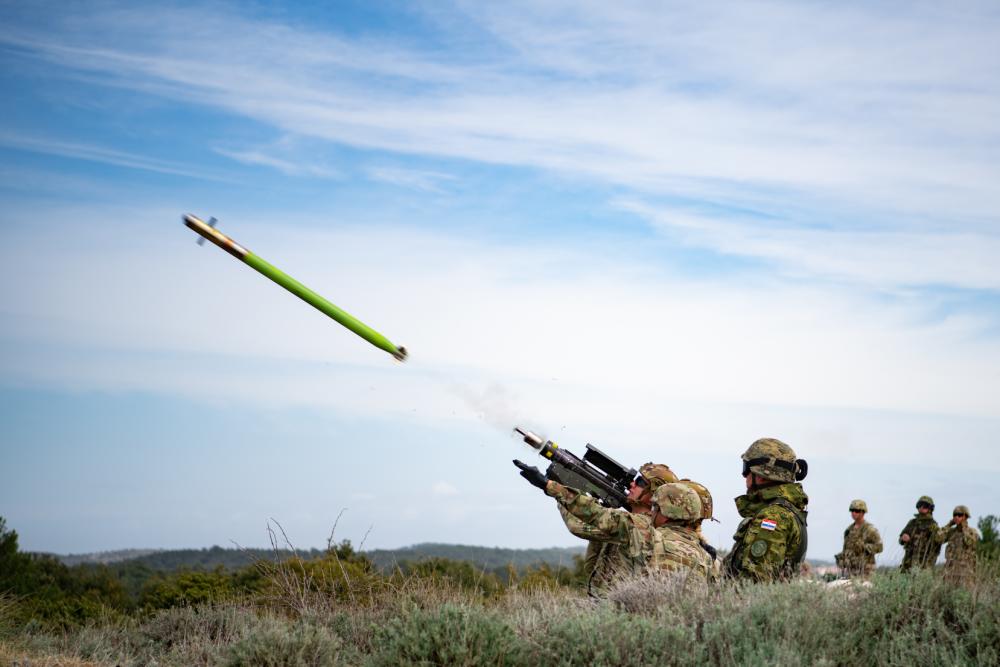PARIS: Less than 10% of the truck-mounted Caesar howitzers that Ukraine acquired from Denmark and France have been lost, according to French manufacturer KNDS Nexter. The system’s higher survivability rate is due to its superior mobility as compared to some other self-propelled or towed weapons.
The business added in a statement to Defense News that losses for some other self-propelled or towed systems in Ukraine’s conflict with Russia amount to over 30%, without going into detail.
:quality(70)/cloudfront-us-east-1.images.arcpublishing.com/archetype/FDLNS37IPFBRPJAAZNBQRTXHEY.jpg)
Ukrainian servicemen fire with a French self-propelled 155 mm/52-calibre gun Caesar towards Russian positions at a front line in the eastern Ukrainian region of Donbas.
Nexter claims that at eighteen metric tons, the French-built Caesar is the lightest 155mm self-propelled gun in the world. The strongest defense for the Caesar system is mobility rather than cannon range, according to Nexter. The howitzer can fire six shells in a minute before folding up and retreating, an artillery maneuver known as shoot-and-scoot.

“Use of drones and loitering munitions has become a real threat 40 kilometers (25 miles) from the front, where the Caesar operates,” Nexter said in the statement. “Its light weight and ability to leave its position in less than a minute to avoid counter-battery fire are therefore major assets.”
Fifty-five of the truck-mounted systems have been delivered to Ukraine; 36 of those came from France, including six that were bought this year, and 19 more were donated by Denmark. In addition to the French cannon, Ukraine has self-propelled systems like the German Panzerhaubitze 2000, the Polish Krab, and Sweden’s Archer, as well as 155mm systems like the American M777 that is towed.
Secretary of State Antony Blinken of the United States and Minister of the French Armed Forces, Sébastien Lecornu, visited the Nexter facility in Versailles, outside of Paris, on Tuesday to discuss the coalition led by the United States and France that will provide artillery and ammunition to Ukraine.
Lecornu stated last week that France, Denmark, and Ukraine have decided to finance the coalition’s 2024 purchase of 78 Caesar systems for Ukraine. That covers the six that have been delivered so far this year.

Nexter has increased monthly Caesar production to six from two before the war, and the target “in the time to come” is 12 cannons per month, Lecornu said in a press conference following the visit. The target is to reach the new capacity within a year, and Nexter has already made investments to boost the output of the system’s components, the company said.
“For the time being, all Caesar production is earmarked for Ukraine and for replenishing stocks of the French Army, which may decide to make further divestments to Ukraine,” Nexter said.
France in December ordered 109 new-generation howitzers from Nexter for about €350 million, with first delivery expected in 2026. The updated cannon will have an armored cabin to protect against mines and small-caliber arms, based on the feedback from French deployments in Afghanistan and Africa’s Sahel region.

The Caesar MkII will get a new 460 HP engine more than double as powerful as the previous 215 HP one, a new six-wheel chassis from military-vehicle maker Arquus, and updated fire control software. The howitzer will keep its 155mm cannon, with a range of more than 40 kilometers, and will remain air-transportable, according to France’s armaments directorate.
After a Ukrainian advantage in artillery fire in the summer of 2023, Russia gained the upper hand, and Lecornu said in January the shell ratio was nearly one-to-six in favor of Russia. Artillery has been the greatest killer in the war in Ukraine, accounting for more than 70% of casualties.
Ukraine’s artillery deficit contributed to recent setbacks on the frontline, including the withdrawal from the city of Avdiivka in the Donetsk region in February. A stronger artillery capability is one of Ukraine’s key needs to win the war, Defense Minister Rustem Umerov said in January.





